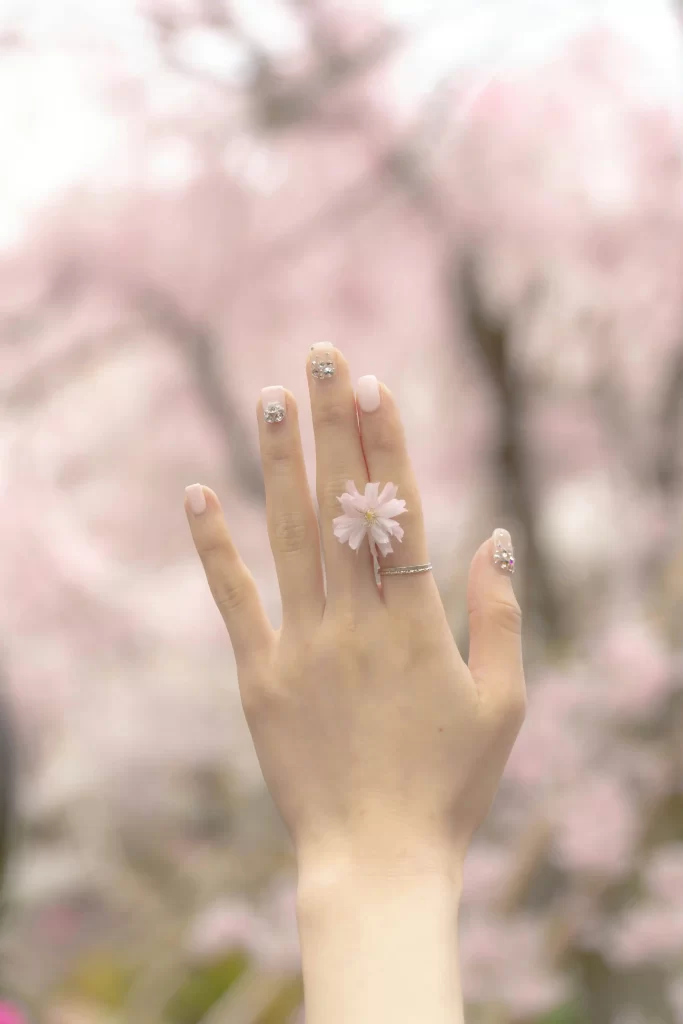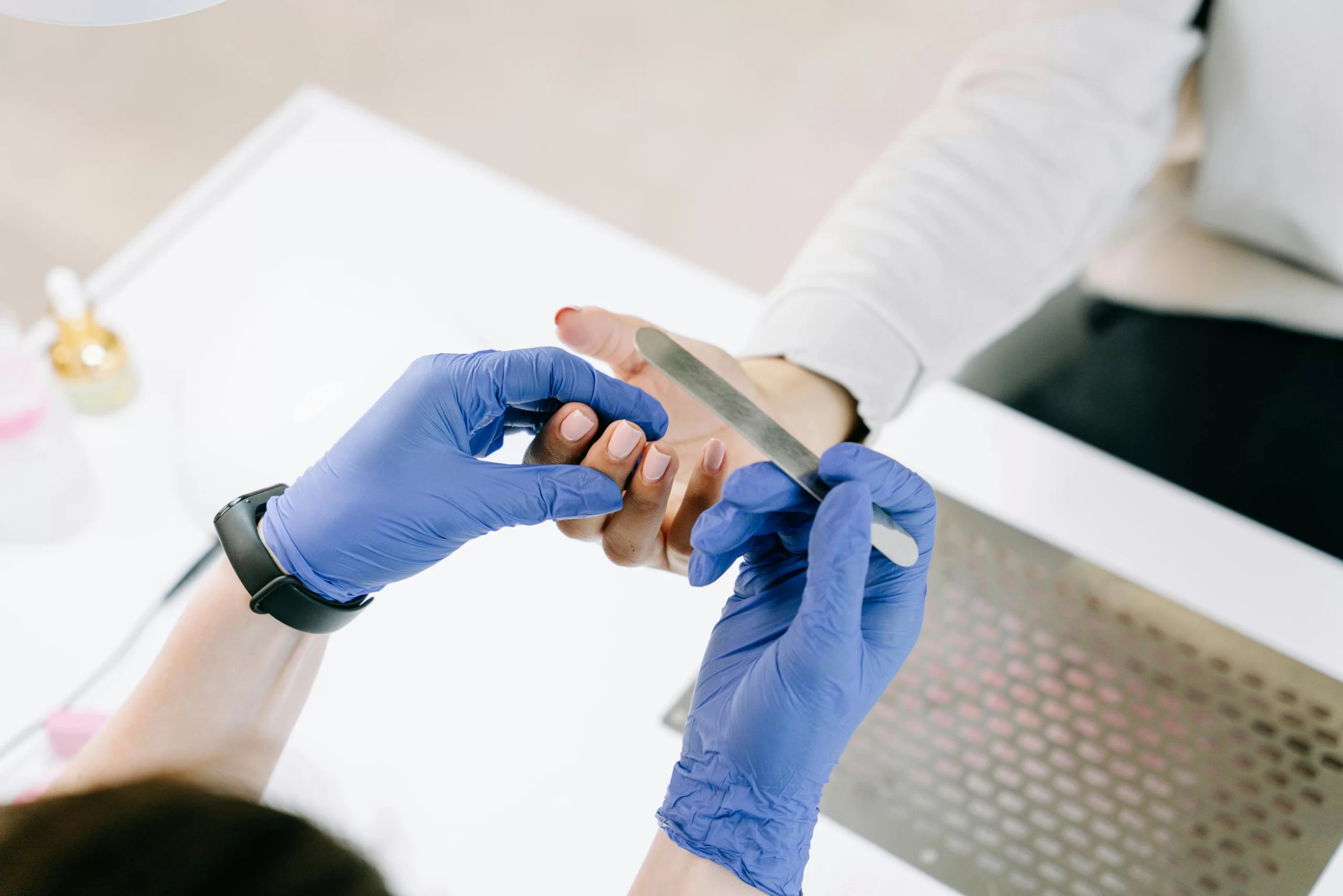Nail Tips for Healthy, Beautiful Nails: Care Guide + Latest Trends
Maintaining healthy, beautiful nails is more than just a cosmetic concern; it’s a reflection of your overall well-being. In this comprehensive guide, we’ll explore essential nail care tips, common mistakes to avoid, and the latest trends to keep your nails in top condition.
Understanding Nail Anatomy: The Foundation of Great Nail Tips
Before diving into nail care routines, it’s important to understand the basic structure of your nails:
- Nail Plate: The visible, hard part of the nail.
- Cuticle: The thin tissue that protects new nail growth from bacteria.
- Lunula: The white, half-moon shape at the base of the nail.
- Matrix: The hidden part under the cuticle where nail growth occurs.
Understanding these components helps in adopting practices that promote nail health and prevent damage.
Essential Nail Tips for Healthier, Stronger Nails

Your nails aren’t just cosmetic—they protect your fingertips and reflect your overall health. Strong, healthy nails require consistent care, proper maintenance, and avoiding harmful practices. Here are essential, actionable nail care tips to maintain beautiful, strong nails naturally.
1. Keep Nails Clean and Dry
Regular cleaning is one of the simplest yet most effective steps you can take for healthier nails. Dirty nails not only look unpleasant but also create an ideal environment for bacteria and fungi, potentially leading to infections or discoloration.
Actionable Tips:
- Wash hands and feet thoroughly: Use mild antibacterial soap and gently scrub underneath your nails with a nail brush daily.
- Dry completely after washing: Moisture trapped beneath nails promotes fungal infections. Use a clean towel and pay special attention to spaces under nails.
- Use antifungal solutions (optional): For extra protection, occasionally apply antifungal solutions, especially if you’re prone to fungal issues.
2. Trim Nails Regularly
Proper trimming prevents nail splitting, snagging, and breaking, keeping your nails smooth and attractive.
Actionable Tips:
- Choose the right tools: Always use sharp, clean nail clippers or manicure scissors.
- Trim straight across: Cutting nails straight reduces the risk of ingrown nails, especially on toenails.
- Avoid overly short nails: Extremely short nails expose the nail bed, increasing vulnerability to infections.
3. Moisturize Cuticles and Nails
Dry, brittle nails break easily, and neglected cuticles become ragged and painful. Regular moisturization nourishes nails, making them flexible, resilient, and less prone to damage.
Actionable tips:
- Apply cuticle oil daily: Oils like jojoba, almond, coconut, or specialized cuticle oil penetrate deeply, hydrating nails and cuticles.
- Use moisturizing hand cream: Incorporate a quality hand lotion into your daily routine, especially after handwashing or before bed.
- DIY moisturizing treatments: For extra hydration, soak nails weekly in warm olive oil or apply petroleum jelly overnight.
4. Use a Base Coat
Skipping a base coat is a common but damaging mistake. A base coat serves as a protective barrier between the nail and polish, preventing stains and damage.
actionable tips
- Protect against discoloration: Base coats help keep nail polish pigments from staining your natural nails.
- Enhance polish durability: A good base coat makes your manicure last longer by providing a smooth, adhesive surface.
- Choose strengthening base coats: Look for base coats containing ingredients like vitamin E, keratin, or calcium to boost nail strength.
5. Avoid Biting Nails
Nail-biting is harmful to nail beds and cuticles, increases infection risk, and negatively affects nail aesthetics. Often driven by anxiety or boredom, addressing this habit can significantly improve nail health.
Actionable Tips to Quit Nail Biting:
- Use bitter-tasting nail polish: Specially formulated polishes have an unpleasant taste, deterring nail-biting.
- Identify and manage stress triggers: Replace nail-biting with healthier stress-management techniques like stress balls, mindfulness, or chewing gum.
- Regular professional manicures: Keeping nails nicely manicured can motivate you to preserve their appearance.
6. Limit Use of Harsh Nail Products
Certain nail products, particularly acetone-based nail polish removers, are too harsh for regular use and strip away natural oils, weakening nails and making them brittle over time.
Actionable Tips:
- Choose gentle nail polish removers: Opt for acetone-free removers containing nourishing ingredients like vitamin E or aloe vera.
- Reduce frequent polish changes: Give nails breaks from polish, gel, and acrylic applications to help them recover and retain moisture naturally.
- Check ingredient labels: Avoid products containing harsh chemicals like formaldehyde, toluene, and DBP (dibutyl phthalate).
7. Wear Protective Gloves
Daily chores involving water, cleaning products, or gardening can severely dry out your nails and cause breakage or damage. Gloves provide an essential protective barrier.
Actionable tips:
- Choose appropriate gloves: Use rubber or vinyl gloves for household cleaning and thicker gloves for gardening and yard work.
- Apply moisturizer before gloves: Apply moisturizer or cream before putting on gloves; this creates a nourishing mini-treatment during chores.
8. Maintain a Balanced Diet
Nutrition is fundamental for healthy nails. Weak, brittle nails often indicate dietary deficiencies, especially in essential vitamins, minerals, and protein.

Nutrients Essential for Nail Health:
- Biotin (Vitamin B7): Supports nail strength and growth. Sources: eggs, almonds, whole grains, sweet potatoes.
- Protein: Builds keratin, the main component of nails. Sources: lean meats, poultry, legumes, fish, nuts.
- Vitamin E: Improves nail circulation and strength. Sources: spinach, avocados, sunflower seeds.
- Omega-3 fatty acids: Prevent brittle nails and dryness. Sources: salmon, chia seeds, walnuts, flaxseeds.
Actionable Dietary Tips:
- Incorporate these nutrients regularly into your meals.
- Consider supplements if you’re deficient in certain vitamins (consult your doctor first).
- Stay hydrated by drinking plenty of water daily, promoting overall nail hydration.
Implementing a Consistent Nail Care Routine
Establishing a consistent routine makes nail care effortless and results long-lasting. Here’s a simple weekly routine:
- Daily: Clean nails, apply moisturizer and cuticle oil.
- Weekly: Trim, file, and buff nails. Use strengthening treatments if necessary.
- Monthly: Schedule professional manicures or pedicures if possible, or conduct thorough DIY nail care treatments at home.
Signs of Healthy Nails

Understanding what healthy nails look like can guide your nail-care decisions:
- Smooth texture without pits or grooves
- Consistent color (usually pinkish)
- Strong, flexible, resistant to cracking or peeling
- Healthy cuticles (hydrated, smooth, no redness or irritation)
Nail Tips: Common Mistakes to Avoid for Healthier Nails
Taking good care of your nails is important, but equally vital is avoiding common mistakes that can damage your nails in the long run. Even the simplest everyday habits can lead to weaker nails or ongoing nail problems. Here’s a list of the most frequent nail-care mistakes and practical ways to avoid them.
1. Using Your Nails as Tools
A very common yet harmful habit is using your nails as tools to open packages, peel labels, or scratch surfaces. Although it might seem harmless, this habit weakens nails, making them more likely to split or break.
How to avoid this mistake:
- Using Nails as Tools: Avoid using your nails to open cans or scratch surfaces, as this can cause them to weaken and break.
- Skipping the Base Coat: Applying nail polish without a base coat can lead to staining and weaken the nails over time.
- Overusing Gel or Acrylic Nails: Frequent use of artificial nails can lead to brittleness. Ensure you give your nails time to recover between applications.
2. Skipping the Base Coat When Applying Nail Polish
Applying nail polish directly to your nails without a base coat can cause staining, weakening, and even peeling. A base coat protects your nails from harmful polish pigments and chemicals.
How to avoid this mistake:
- Always apply a clear base coat first: This simple step creates a protective barrier between your nail and colored polish.
- Choose nourishing base coats: Look for base coats containing strengthening ingredients like calcium or keratin.
- Keep base coats visible: Place your base coat with your nail polish collection to make it impossible to forget.
3. Overusing Gel or Acrylic Nails
Gel and acrylic nails might look beautiful, but constant use weakens natural nails by making them brittle and thin. Long-term damage can be challenging to repair.
How to avoid this mistake:
- Limit frequency: Use gel or acrylic nails occasionally rather than continuously.
- Take nail breaks: Give your nails at least two to three weeks of rest between applications.
- Strengthen during breaks: During these breaks, use nourishing nail treatments or strengthening polish to help nails recover.
4. Aggressive Cuticle Cutting or Pushing
Removing or aggressively pushing back cuticles damages the protective layer around your nail. This habit often leads to infections, redness, or even permanent damage to the nail bed.
How to avoid this mistake:
- Gently push, never cut: Instead of cutting, gently push cuticles back after softening them in warm water or with cuticle oil.
- Use cuticle oil regularly: This keeps cuticles soft, reducing the urge to cut or pick at them.
- Professional care if unsure: If you’re not confident, ask for professional help during manicures.
5. Ignoring Signs of Nail Damage or Infection
Neglecting changes in your nails—such as color shifts, strange lines, or persistent brittleness—can allow minor problems to become serious health concerns.
How to avoid this mistake:
- Regularly inspect your nails: Notice changes quickly by routinely examining your nails.
- Learn signs of infection: Pay attention to persistent discoloration, pain, swelling, or nails lifting from the nail bed.
- Consult professionals promptly: If you notice unusual nail changes, seek advice from a dermatologist or healthcare provider immediately.
6. Excessive Filing or Incorrect Filing Techniques
Overfiling or filing nails incorrectly causes them to weaken and split. Using rough files or filing in both directions contributes significantly to nail damage.
How to avoid this mistake:
- File nails gently in one direction: Avoid sawing back and forth; instead, file nails in gentle, smooth strokes from the sides toward the center.
- Choose finer grit files: A fine-grit file (180-240 grit) is gentle on nails and prevents splitting.
- Replace nail files regularly: Old, dull nail files cause uneven edges and damage.
7. Frequently Changing Nail Polish
Constantly removing and reapplying nail polish strips away moisture and protective oils from your nails, leaving them dry and brittle.
How to avoid this mistake:
- Wear polish longer: Aim for fewer polish changes per month.
- Use moisturizing nail polish remover: Acetone-free removers enriched with moisturizers help keep nails hydrated.
- Give nails polish-free days: Allow nails to breathe occasionally and moisturize them during these breaks.
8. Poor Diet and Hydration
Many people overlook diet and hydration as essential for nail health. Poor nutrition leads directly to weak, brittle nails.
How to avoid this mistake:
- Drink plenty of water: Keep hydrated to maintain moisture in nails.
- Eat balanced meals: Include nail-friendly nutrients like proteins, vitamins, and healthy fats in your meals regularly.
- Consider supplements if needed: Consult your doctor about supplements like biotin if you suspect deficiencies.
Practical nail Tips to Remember These Mistakes Easily:
- Make a checklist of nail-care do’s and don’ts and place it where you frequently see it (such as your bathroom or vanity).
- Incorporate reminders about nail health into your daily routine.
- Pay attention to how small changes in your daily habits improve nail strength and appearance over time.
By avoiding these common nail care mistakes, your nails will naturally become stronger, healthier, and more beautiful, making your overall nail-care routine easier and more enjoyable.
Trending Nail Styles & Inspirations

Minimalist Nail Art
Minimalist nail art emphasizes simplicity, elegance, and cleanliness, often featuring small, subtle designs on neutral backgrounds. This trend complements personal styles beautifully and highlights well-cared-for nails and hands. If you’re considering minimalist designs and are mindful of your overall hand appearance—including existing tattoos you might reconsider—check out our Tattoo Removal Before and After: Full Guide to see your options clearly.
Staying updated with current nail trends can be both fun and inspiring. Here are some popular styles:
- Lavender Milk Nails: A soft, pastel lavender shade that’s perfect for spring.
- Sugar Cookie Nails: A light, shimmery white polish that offers a delicate and elegant look.
- Cherry Blossom Nails: Inspired by the delicate pink hues of cherry blossoms, this trend brings a fresh and feminine touch to your manicure.
By following these proven nail tips, you’ll be on your way to stronger, healthier, and more beautiful nails—naturally


